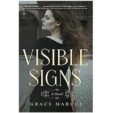This gracefully written, heartfelt novel examines the risks and rewards of facing doubts and desires concerning the direction of one’s life, and of trying to act according to these feelings. It also considers the power of close friendships, and how these relationships can sustain us in ways that familial, or marital, bonds might not be able to.
Set in the early seventies, the story is told from the alternating points of view of two close friends, both of whom are at a crossroads in their lives and unsure of what direction to take.
The first protagonist is Sister Jude, who feels called to feed the poor in the community surrounding her monastery. Eventually, she gets the idea of setting up a food bank that could be funded in part by an inheritance from her father.
Soon, however, Sister Jude’s efforts to help the poor come into conflict with her duties at the monastery, and the Mother Superior gives her a deadline to make a big choice about the direction of her life. She grants Sister Jude a year’s sabbatical to get the food bank up and running and to decide whether she wants to continue to serve the poor as a lay person or return to the monastery and her duties there. As frustrated as she is by the limitations of her life at the monastery, and by her belief that lay people are doing more to protest societal wrongs (especially the Vietnam War) than the Catholic Church is, it is not easy for Sister Jude to break away from her order. She considers the monastery her home and her fellow sisters her family. Nevertheless, she moves away from the order and into her own home, trades her habit for regular clothing, and throws her heart into ensuring the food bank’s success. Also, she reassumes her birth name, Rita Mooney (which, following the lead of the book, I’ll use for the rest of the review).
The other protagonist is Connie Leonetti, a lifelong friend of Rita’s who is at a crossroads of her own, largely because of the behavior of her husband, Vince, a struggling actor. Although Vince can be loving and charming, and he cares about the couple’s two daughters, Anna and Ceci, he occasionally explodes in anger toward Connie, especially when he gets disappointing news about an acting role or audition.
After an especially disturbing outburst from Vince, Connie flees with Anna and Ceci to Rita’s new home, and Rita does everything she can to be supportive of her friend. At the same time, Rita is worried that Connie might go back to Vince. At one point, she observes that “Connie held her husband up to the half-light with one eye closed, winking him into perfection.”
For her part, Connie begins to consider what her future might look like, not just in terms of whether Vince is a part of it. A former botany student and talented gardener, she starts to imagine making gardening a more central part of her life and–potentially–a business.
Throughout the novel, Marcus portrays Rita’s and Connie’s journeys of self-discovery with insight and feeling, and she had me rooting for both women. The complications that the two friends face on their personal journeys make their stories even richer, and ultimately more rewarding. Rita’s uncertainty about whether to serve others through her order or as a lay person deepens when she forms a personal–and potentially romantic–relationship with a local farmer who steps up to help her with the food bank. She must figure out whether to continue to keep him at a friendly distance or to allow herself to discover where their mutual feelings of attraction might lead them.
As for Connie, pressures to reunite with her husband come not just from Vince but also from her large, Italian-American family. Most of them have seen only the good side of Vince, and as devout Catholics, they hope that the marriage can survive, despite the toll that it’s taking on Connie.
This gets at another great strength of the novel: how it shows the ways in which close friends can offer us crucial support and understanding, especially when blood relatives or romantic partners–if we have them–aren’t able to. Rita remains at Connie’s side throughout Connie’s struggles with Vince and her family, and she treats Anna and Ceci (and, eventually, a new baby of Connie’s) like her own children. And Connie lovingly fills a significant void for Rita, an only child who has virtually no blood relations left, having lost both of her parents and, later in the novel, her last surviving relative.
In conclusion, Visible Signs is an inspiring, thoughtfully crafted novel that vividly brings to life a time when many women were exploring new possibilities for their lives, ones that often broke through long-standing limitations that society, and other forces, had placed on them. These stories of self discovery–and of the need to pay attention to inner truths–remain deeply relevant today.
Would My Pick be Your Pick?
If you're interested in ________, the answer may be "Yes":■ Journeys of self discovery
■ Stories about friendship
■ Historical fiction
■ Second-wave feminism

